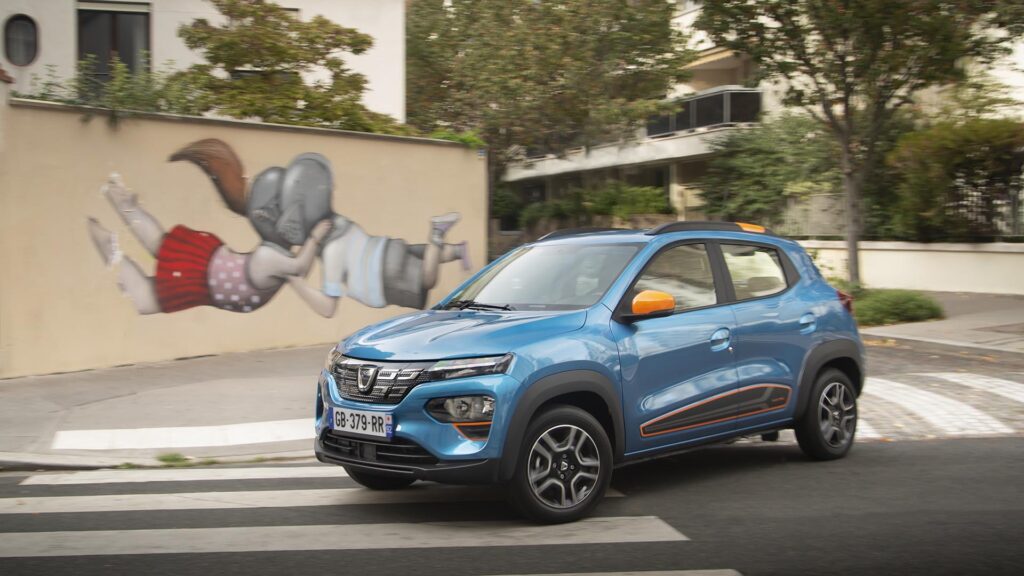If the electric car is put forward like the new individual car, is it designed for all profiles of riders? In particular, are the savings related to use compared to a thermal car sufficient for those who only travel a few thousand kilometers per year?
When a person begins to take an interest in the electric car, he must integrate a lot of information. One of the first concerns the cost of use, which is often much lower than that of a thermal car.
The cost of the electricity needed to drive is indeed much lower, but is it enough to offset the price difference when buying? Some driver profiles will easily be able to convince themselves of the financial benefits of driving an electric car, while others will not see the advantage for many years.
In France, an average driver travels about 12,000 kilometers per year, and insurance usually distinguishes small riders as those traveling 6,000 kilometers per year (i.e. 500 km per month). Can this type of motorist still find an interest in driving an electric car?
An electric car is still expensive
This is a criticism that comes up often, and rightly so: a new electric car is expensive, too expensive for many French people. The average purchase price of a new car in France is nearly 33,000 euros in 2023 and few electric cars are less expensive.
The best-selling electric vehicles are instead offered between 35,000 and 45,000 euros (Tesla Model 3, Tesla Model Y, Renault Zoe), so as to benefit from the maximum ecological bonus. Thus, it is undeniable that the displayed price of a new electric car is still very high in 2023.
In addition, the second-hand market is incomparable with that of thermal cars, which have been around for decades. Finding an electric vehicle for less than 5,000 euros is an almost impossible mission, while thermal cars in working order are present in large numbers on the classifieds sites.
So, with maintenance that is greatly reduced and an incomparable cost of use, is it still possible for an electric car to be cheaper than a thermal one?
- Given the current prices of electricity and gasoline, the cost per 100 km of an electric car is estimated at 2.5 euros, compared to 10 euros for a thermal one.
- A driver traveling 6,000 kilometers per year, which we consider to be the limit for a small rider, then saves only 450 euros each year.
- If the difference in purchase price is 5,000 euros for example, it will take more than 11 years of electric car use to start seeing the financial benefit.
Suffice to say that for small riders, this is not necessarily a valid argument. Fortunately, there are many purchase aids to lower the cost of an electric car. But is this enough to make economic sense for small riders?
Substantial aid, but is it enough?
In France, many aids allow eligible people to drive an electric car for a relatively low price. The Ecological Bonus allows all individuals to lower the price by 5,000 euros on electric vehicles under 45,000 euros, and it can go up to 7,000 euros for low-income people.
A conversion bonus, a ZFEm bonus and additional bonus are also offered to eligible households (subject to income conditions and the location of the main residence or workplace), bringing the total aid to 12,500 euros.
However, an electric car, even the cheapest on the market, is still expensive, when you put aside the aids that are not available to everyone. The Dacia Spring is notably displayed at 20,800 euros, while a petrol Renault Twingo is available from 16,750 euros.
Worse still, an electric Twingo is displayed from 25,250, or 50% more than the petrol version. Including the ecological bonus, an electric Twingo costs 20,250, or 3,500 euros more than the petrol version.

As said above, if we consider that the gain in use is 450 euros per year for small riders, it will only be after 8 years that the cost curves will be reversed between the two vehicles.
In addition, the constraints linked to use are not necessarily in favor of electric vehicles if the people concerned wish to make a few long journeys: the range of an electric Twingo is 190 km, which does not allow really get more than 100 km away from home.
By counting the other aids, however, the electric becomes more interesting. On the example of a Twingo, with 12,500 euros in aid, the electric falls to 12,750 euros, or 4,000 euros less than the thermal version. In this specific case, the choice of new electric makes sense from the start, regardless of the driver profile.
For people who do not have the possibility of benefiting from all the aid available, it is necessary to find other arguments than the financial one to encourage them to go electric. What if it went through ecological awareness?
Ecological awareness: an argument in favor of the connected car?
The electric car is put forward by governments as being a less polluting alternative to the thermal vehicle. However, many untruths and preconceived ideas remain, which may lead some skeptics to consider the electric car as too polluting.
In particular, we hear a lot about batteries, which are made in China with electricity from coal-fired power plants, with a significant ecological impact. If the carbon debt of an electric car is very real when it leaves the factory, we are lucky in Europe – and especially in France – to take advantage of carbon-free electricity to recharge our cars.

Thus, in use, it is undeniable that the electric car has a less significant ecological impact than a thermal car. Serious studies on the subject even show that in the worst cases (battery made in China, and car recharged with electricity from coal-fired power stations), the carbon footprint of an electric car is lower than that of a equivalent thermal car, over its entire life cycle.
Therefore, people with an ecological conscience can consider the electric car rather than a thermal car for their trips, even if financially, it is not the best choice for them. It is necessary to arbitrate between the cost and the carbon footprint to choose what best suits their state of mind.
Who really makes money driving an electric car?
The advantages of the electric car are undeniable compared to a thermal vehicle, in terms of driving comfort, silence, but there are still disadvantages for many profiles. The high cost and the relative difficulty of traveling long distances are very real for most people, which does not facilitate the adoption of a connected vehicle.
Aid for purchase can reduce the entry ticket significantly, which can allow young riders to find their way financially. Here is a summary, below, of the savings estimated annually according to the profiles of electric vehicle drivers compared to an equivalent thermal vehicle.
| Kilometers per year | Savings in 1 year | Savings in 5 years |
|---|---|---|
| 6000km | 450 € | 2250 € |
| 10000km | 750 € | 3750 € |
| 15000km | 1125 € | 5625 € |
| 20000km | 1500 € | 7500 € |
| 30000km | 2250 € | 11250 € |
| 40000km | 3000 € | 15000 € |
As expected, financially, the electric car is very interesting, especially for large riders. For the others, the financial argument must not be the only reason for switching to electric, otherwise they could not necessarily be satisfied.
Moreover, if the cost of fuel increases, the cost of electricity seems to increase much faster. And again, we are not talking about fast charging, which can already be more expensive than a full tank of gas to cover an equivalent distance.
Finally, the ban on sales of thermal vehicles by 2035 in Europe and the multiplication of ZFEs can be a strong argument in favor of electric mobility: what is the point of acquiring a new thermal car today, if it will not be possible to travel with it in our cities before the end of the decade?
If you liked this article, you will like the following ones: do not miss them by subscribing to Numerama on Google News.
